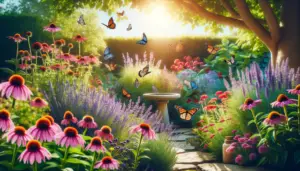Creating a backyard bird sanctuary is a wonderful way to enjoy wildlife and contribute to the preservation of bird species. In this comprehensive guide, we’ll explore the essential steps and considerations for transforming your backyard into a haven for birds.
Understanding Bird Habitats
To create an effective bird sanctuary, you need to understand what birds are looking for: food, water, shelter, and nesting sites. Each bird species has its unique requirements, so a diverse environment can attract a wider variety of birds.
Planning Your Bird Sanctuary
Assessing Your Space
Examine your backyard’s size, layout, and existing vegetation. Determine which areas can be enhanced or transformed to attract birds.
Research Local Bird Species
Identify which birds are native to your area. This knowledge will guide your choices in plant species, bird feeders, and other elements of the sanctuary.
Creating the Perfect Environment
Planting Native Vegetation
Choose native plants, shrubs, and trees that provide natural food sources, nesting sites, and shelter for birds.
Adding Water Features
A birdbath or a small pond can be a significant attraction for birds. Ensure the water is clean and accessible.
Installing Bird Feeders and Houses
Select various feeders to accommodate different species and dietary needs. Birdhouses should cater to the specific nesting preferences of the birds you want to attract.
Designing Your Sanctuary
Arrange in Layers
Think vertically – ground cover, shrubs, and trees provide different habitat layers that appeal to various bird species.
Natural Shelter
Leave some areas of your garden wild to offer natural shelter and foraging grounds for birds.
Safe and Quiet
Ensure your sanctuary is safe from predators and disturbances. Cats and other pets should be kept away.
Maintaining Your Bird Sanctuary
Regular Feeding and Watering
Keep bird feeders and water features clean and well-stocked.
Seasonal Care
Adjust your care routine according to the seasons. Different species may visit depending on the time of year.
Observation and Adjustment
Observe which features attract the most birds and adjust your sanctuary accordingly.
Enjoying Your Bird Sanctuary
Once established, enjoy bird watching and the satisfaction of contributing to wildlife conservation. Record the species that visit and any nesting activity.
FAQs
Q: What are the best plants to attract birds? A: Native plants that provide food (berries, seeds, nectar) and shelter are best. Examples include berry-producing shrubs, native grasses, and flowering plants.
Q: How can I keep my bird sanctuary safe from predators? A: Place birdhouses and feeders out of reach of predators, use baffles, and keep the area clear of hiding spots for cats and other animals.
Q: What type of bird feed should I use? A: Different birds have different diets. Sunflower seeds, suet, and nectar are popular choices. Research local bird species to cater to their specific needs.
Q: How often should I clean bird feeders and baths? A: Clean them regularly, at least once a week, to prevent the spread of disease.
Q: Can I create a bird sanctuary in a small backyard? A: Absolutely! Even a small space can be made attractive to birds with the right elements.
Creating a backyard bird sanctuary is an enriching experience that connects you with nature and helps local wildlife. With the right planning, design, and maintenance, your garden will become a bustling hub of bird activity throughout the year.








